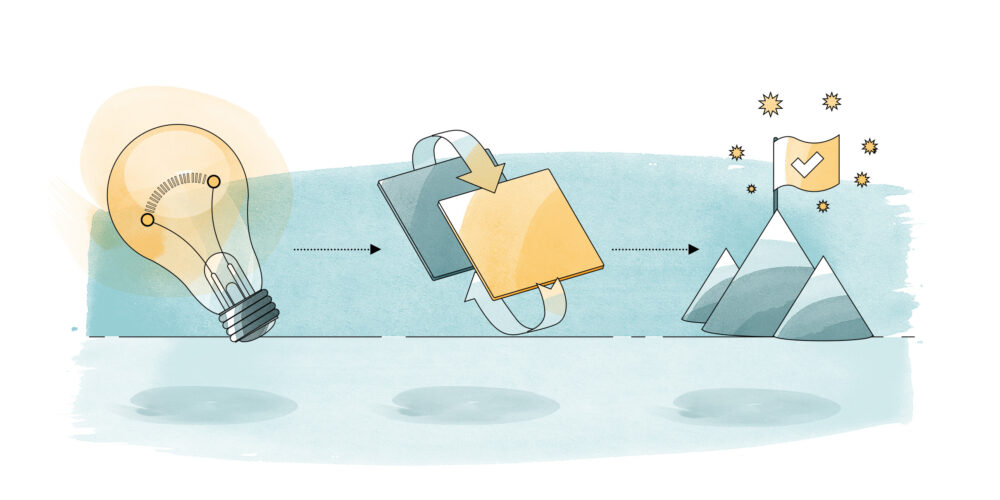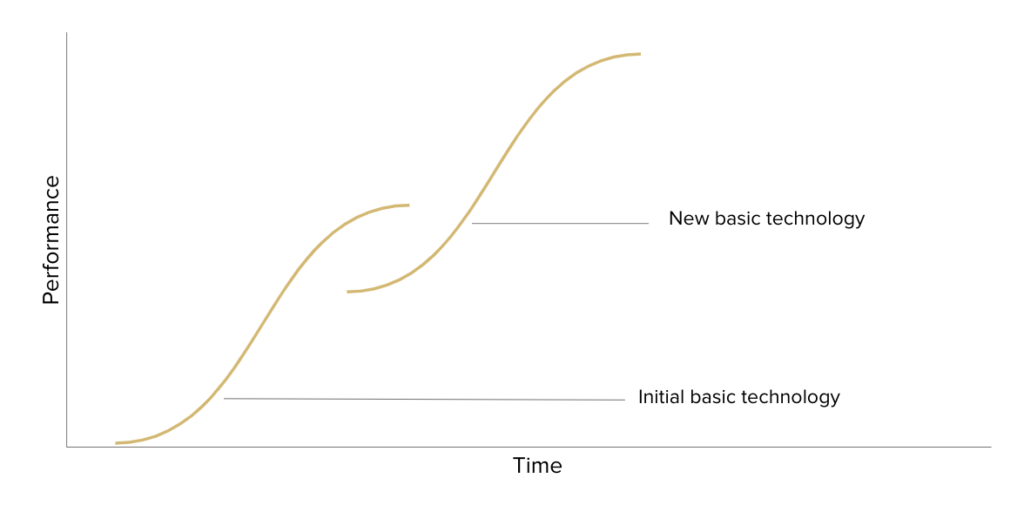Subscribe to join thousands of other ecommerce experts

Reinventing innovation at smec and how constant change is the only way moving forward
Those of you, who are familiar with our blog articles revolving around the established innovation process at smec know what I’m talking about. Those new to smec’s innovation process…well, here’s a quick recap of what we did over the past 1.5 years.
In July 2019, we noticed that there was a need for a strong innovation process at smec. Back then, we chose to follow the stage-gate process as our “basic technology”, although in an adapted more agile version.
Introducing the stage-gate process into our innovation process was the first step we took, but what was clear to us from the very beginning was that we’ll soon reach a turning point calling for adaptation. We knew that our innovation process needed to move into the direction of lean innovation management.
Fast-forward to August 2019: Only a couple of months passed until we identified the need for change. We reached this expected turning point and realised even more that it was necessary to remain as flexible as possible in adjusting our innovation process – basically, we had to adapt a lean approach towards a lean innovation process.
At smec, we do see change as an opportunity to unlock new value but also as a way for us to thrive.
Introducing a thought-through innovation process
From the beginning onwards, we based our innovation process on the principles of transparency and participation. This means that internal innovators are supported in sharing their ideas, which are then evaluated and subsequently shared with the entire company (on a weekly basis).
At first we were pretty satisfied with the results because smecies adapted to the newly introduced setting and innovation process incredibly quickly. We even struggled hard to keep up with the pace of new ideas and initiatives popping up. However, once we decided to delve deeper into some of those topics raised, something seemed to have changed. Suddenly, there were hardly new ideas being brought up. We had to know why.
By conducting internal research we discovered that people were still highly motivated to innovate, but they were simply too busy to do so. Furthermore, we learned that we needed to go to the market even earlier than actually possible when following the stage-gate process.
It was time for a change. So, what seemed to be the right approach some weeks earlier, didn’t work anymore – and that was totally ok for us. We expected this to happen, we were just surprised that it happened so fast.
Rewinding innovative thinking at smec: The quest for a new “basic technology”
Have you ever stumbled across the so-called technology s-curve? Read on what’s it about in case you need to refresh your memory and learn how we applied it.

The technology s-curve in a nutshell
As you know new technology needs quite some investment in the very beginning. And you most certainly don’t get lots of progress in return for invested money early on. But there is a point in time when the curve turns and the technology starts working – the investment pays off. When you then hit the pareto optimum with the technology, the curve turns one more time and it becomes more difficult again to make progress. What to do then, right?
smec’s innovation process called for change
In mid-2020, we reached that point with our innovation process – The curve turned one more time and we were faced with a hurdle to overcome. Suddenly, we had to invest much more time and effort in order to see some progress in regards to the further development of our processes.
What this meant:
We did what was recommended following the s-curve model, meaning we started to work on a new approach based on a completely different “technology”.
Pursuing this new approach to reinvent our innovation process also entailed embracing what we refer to as the early stage market tests. The idea behind it is quite simple: Go to the market with early stage increments of a product or service and try to sell it. Sounds familiar to you? Of course it does. The idea isn’t brand new and many companies (including us) already started to work with this Minimal Viable Product (MVP) approach years ago. But a couple of months ago, we came across a great book written by Alberto Savoia – “The Right It”. To us discovering this book felt somewhat like finding the missing piece because this book is not about the technological aspect of innovation, instead it sheds light on the market side of things. And this is what we needed.
Driving innovation via a customer-focused approach vs. a customer-based approach
Some of you might have had the opportunity already to work with the MVP approach. I’m sure you do know the arising tension one feels in the middle of this process.
So, let’s imagine, after months (or even longer) of hard work, endless discussions and possibly even unexpected struggles, you finally feel like you have something marketable. Next step: You’re in talks with an important customer pitching the amazing aspects of your new product. And then, relief – the customer likes it. So, what next?
Following the “Skin in the Game” concept
Nicholas Taleb, author of the epic book “Skin in the Game”, would now come up with the following questions to consider:
- How much did it cost your customer to tell you that you are on the right path?
- Was there any investment in your new product besides speaking an opinion out loud?
“Skin in the Game” describes any form of participating in the risk of something new. Therefore, some sort of investment (e.g. a down payment, providing time or data,…) from the involved “partner” is needed, highlighting that there’s a true need for the product or service.
This might sound crazy at first, but just think about it for a minute. If you’re really on the right track with a new product or service, if you really found a solution to a customer’s problem, there will be willingness from the market to invest in your product – hence, in you.
And this is what we all aim for, isn’t it?
Reinventing innovation at smec
At Smarter Ecommerce GmbH we’re heavily investing in our future and are currently working on several new topics in parallel. This means that we’re not changing our approach in advanced cases any more. We recognise what worked out pretty well in the past and use those learnings for further proceeding.
For example, the principle of transparency is still deeply ingrained in our current innovation process. This means that we keep our colleagues constantly informed about our initiatives and invite them to participate in workshops and form dedicated task forces. This way we empower our colleagues to not only share their ideas – great ideas, by the way – but also to support them. By appreciating their willingness and dedication to contribute actively in new initiatives we set the foundation for innovative thinkers shaping the company’s future.
What this meant:
By reinventing our innovation process mainly based on the stage-gate approach we shifted away from bureaucratic burden – actually, it was quite a bit we got rid of. Fair enough, the stage-gate approach has lots of advantages, but it also comes with a full load of bureaucracy – that’s just an undeniable fact.
When changing our innovation process, we aimed for the leanest possible approach towards innovation. Our strategy to achieve this: to reduce the needed steps to an absolute minimum. The approach we took also affected the lead time of our processes. In other words, before we made the decision to change our innovation process, we had fixed “innovation sprints”, whereas now we aim to make decisions fast – so, at the exact moment they’re required to be made. As a result, we changed the mode of decision-making.
The outcome:
We incorporated the concept of metered funding into our innovation process. Why? The metered funding approach, which was brought up bei Eric Ries, author of “The Lean Startup” and “The Startup Way”, is a pretty simple approach facilitating fast decision making.
Metered funding in a nutshell: You don’t only have to be able to convince the market about your idea, but also sell it internally. This means that you basically need to ask for certain resources (internally) in order to achieve specific learnings which you can then use to optimise and develop your idea further. If you’re successful, you can then ask for more funding (resources). Unsurprisingly, you then repeat this process as long as necessary until you reach a point where you have all the information required to be able to develop a product or service with a great market fit or the other case, you have enough information and evidence to stop working on further developing this matter.
Having all this in mind, I was also really inspired by the way Alberto Savoia describes how to move forward and also how he addresses the willingness to take risks. According to him, you’ll have to tweak quite often and sometimes even pivot in order to reach the information you need (to proceed or stop). The important thing is to not give up too early but also avoid trying to “ride a dead horse”. Therefore, it is essential to work with hypotheses and collect data yourself. The most important takeaway here: You need to truly understand your data to reap the benefits of having this information at your fingertips.
Conducting early stage market experiments – An approach we’ll still follow in one year from now?
This will depend on the results generated and the company’s needs in the future. As an old proverb says: “A rolling stone gathers no moss” – that’s what we believe too. Aiming to have innovation at our core demands to never stand still but instead to keep on moving. Constant change is the way forward. We’ve established that already. But by questioning ourselves and continuously testing new approaches we up the game and stay ahead of the competition.
However, be aware that from time to time this evolutionary approach is actually not enough any more. What it needs then is a small revolution to remove the moss and rust from your stone. It may be difficult to accept because that moss and rust might have been successful core components in the past but they’re most likely not what you need to take into account when working on innovations that are ready for the future.
As stated in the beginning innovation leads to change, let’s see which changes fuel innovation in the years to come!

